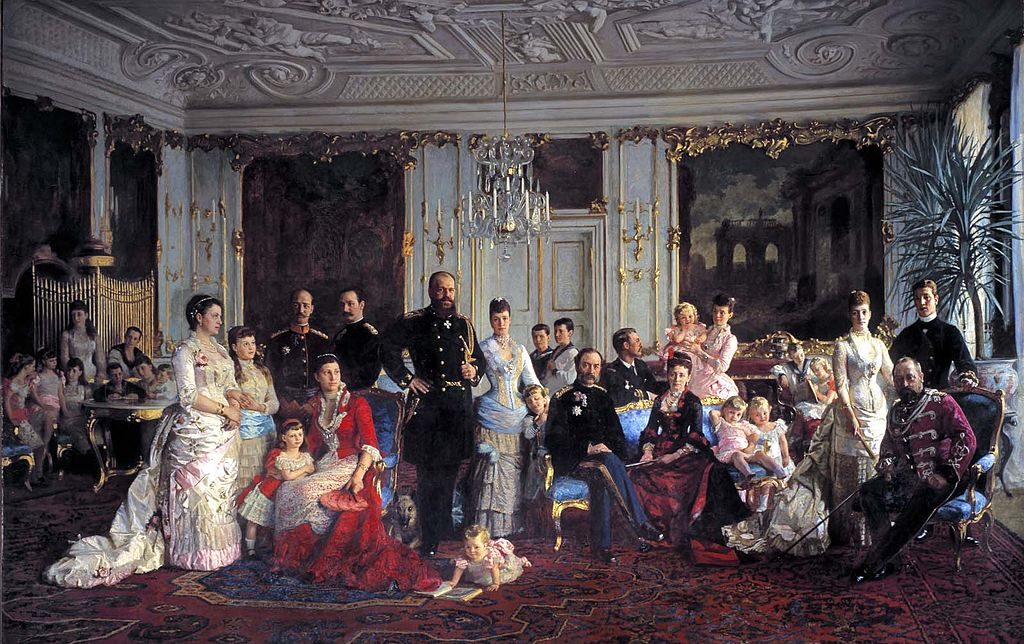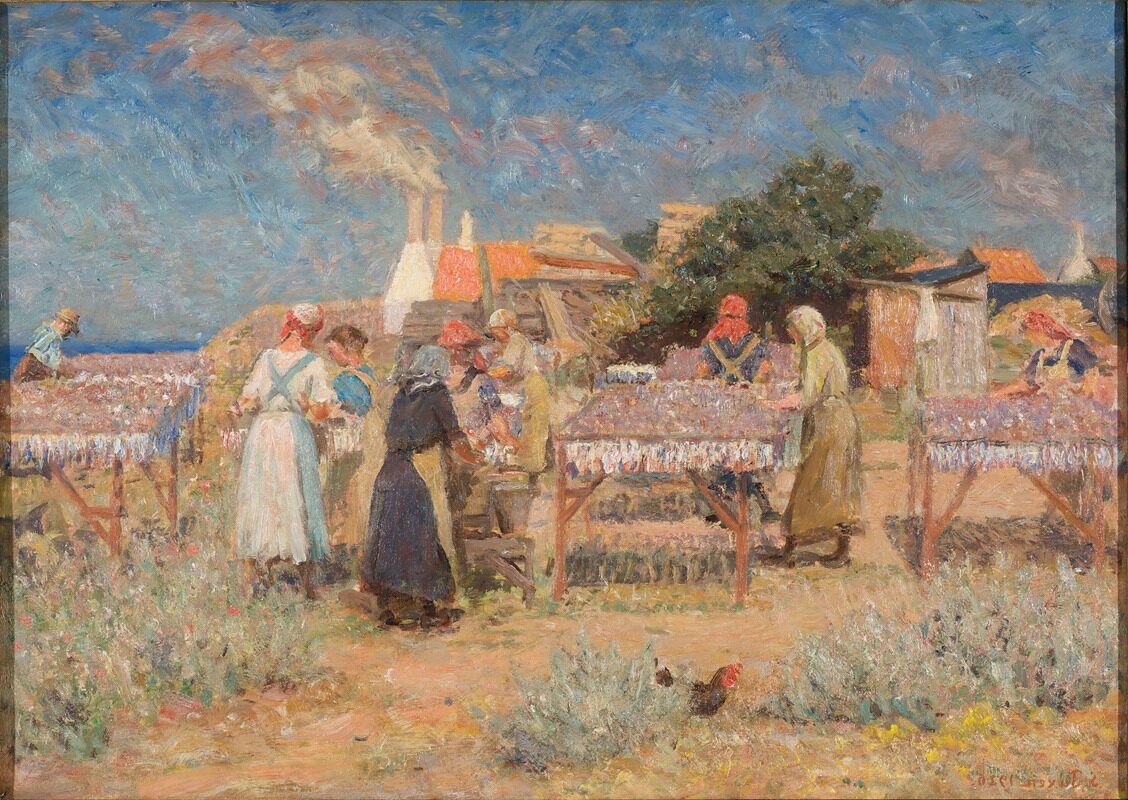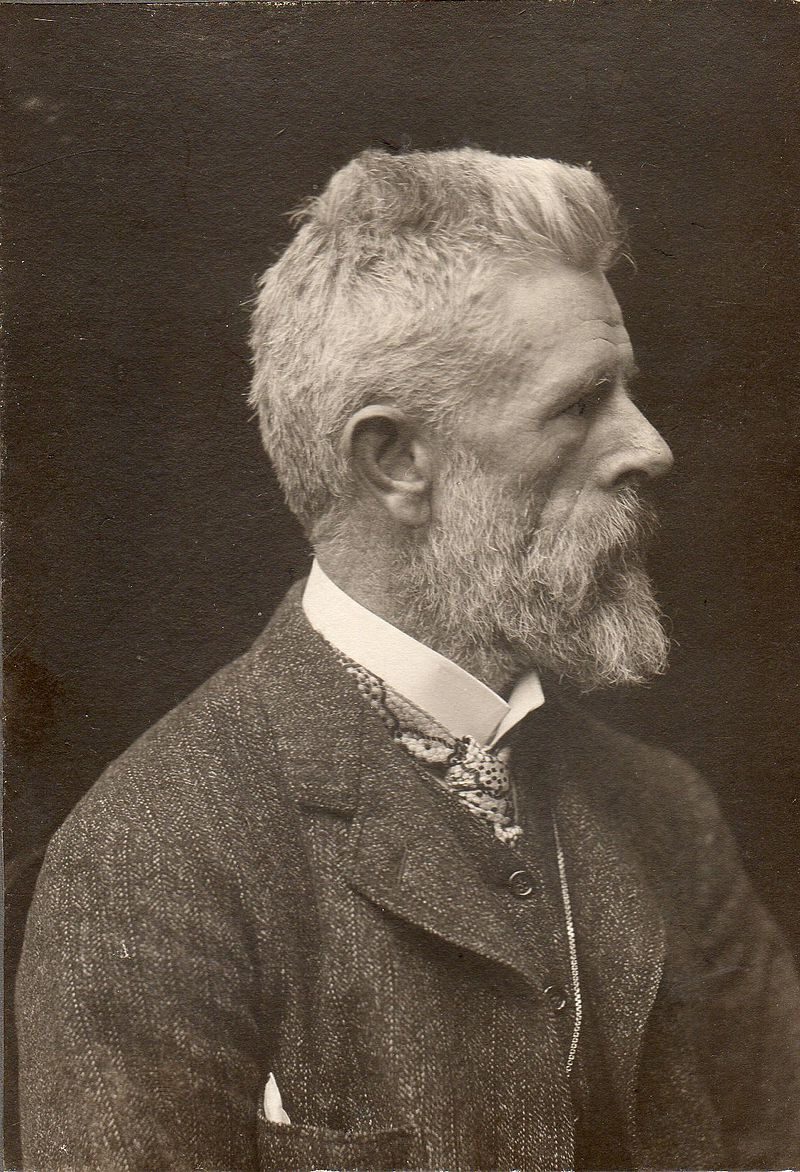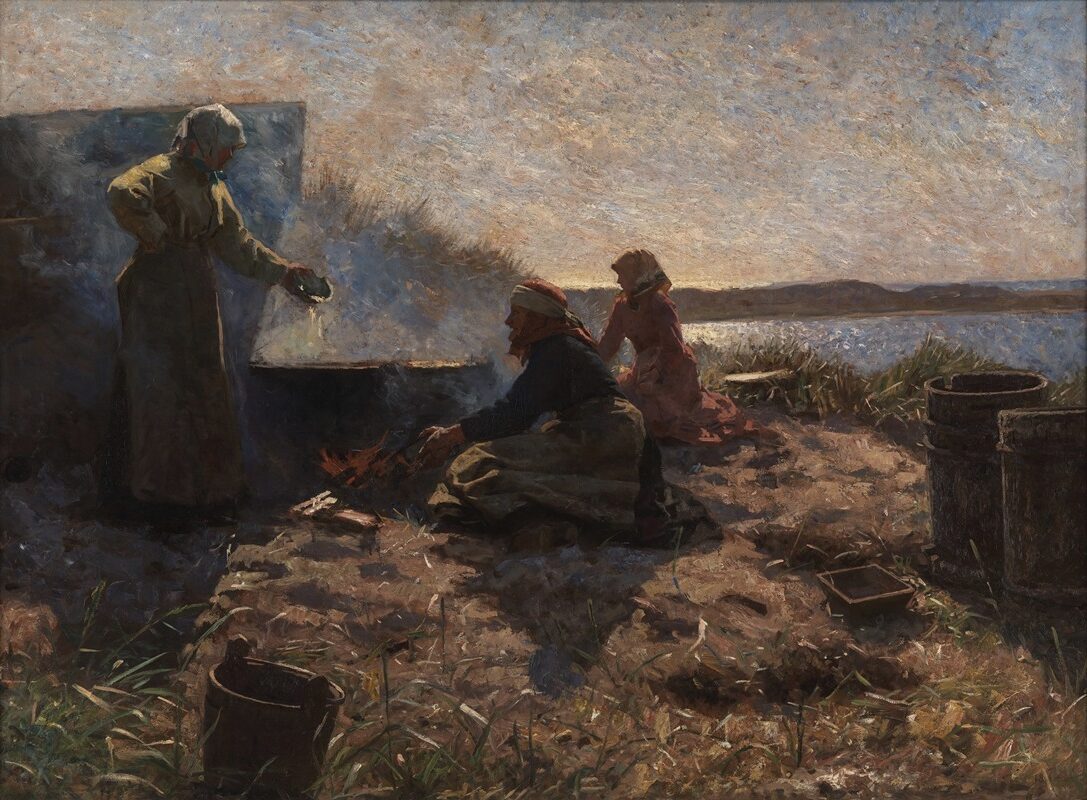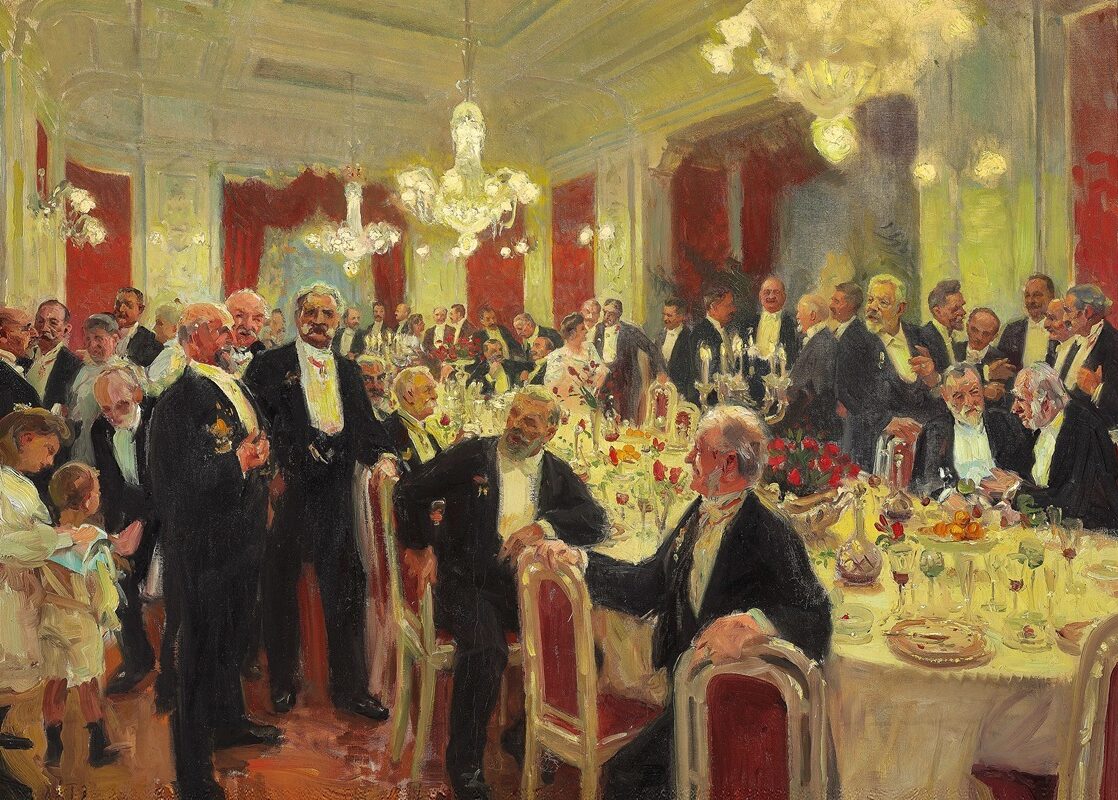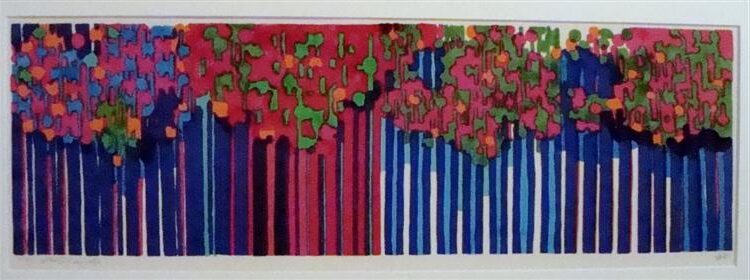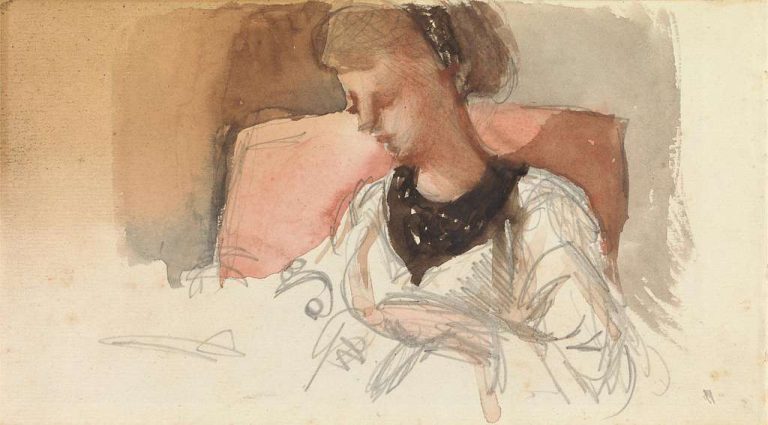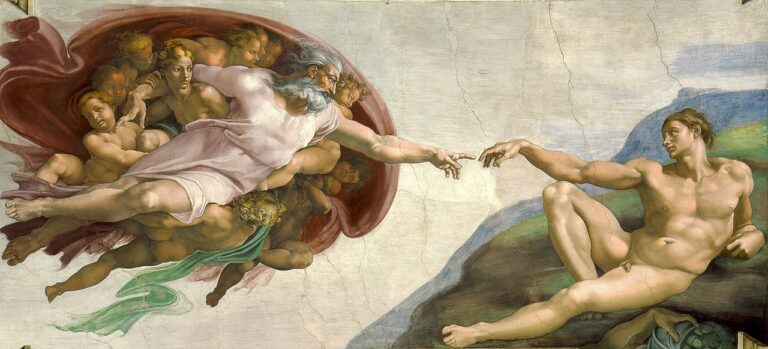Laurits Tuxen, Painter: The Danish Master of Light and Color
Born: 9 December 1853, Copenhagen, Denmark
Death: 21 November 1927, Copenhagen, Denmark
Mouvement artistique : Réalisme
Nationalité : Danois
Institution: Royal Danish Academy of Fine Arts and Paris studio of Léon Bonnat
Laurits Tuxen, Painter: The Danish Master of Light and Color
Life and Career of Laurits Tuxen
Laurits Regner Tuxen (1853-1927) established himself as one of Denmark’s premier painters during the late 19th and early 20th centuries. His extraordinary talent for figure painting and portraiture earned him commissions from royal families across Europe.
Early Years in Copenhagen
Born on December 9, 1853, in Copenhagen, Laurits Tuxen grew up in a cultured environment. His father, Nicolai Elias Tuxen, and mother, Bertha Laura Giødvad, provided him with a supportive background for his artistic development.
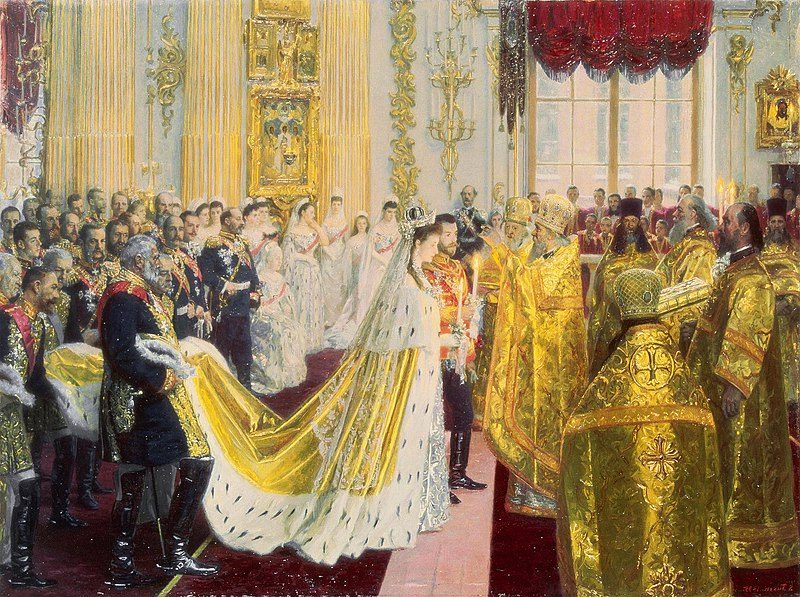
The Wedding of Tsar Nicholas II, 1895, by Laurits Tuxen
Tuxen showed artistic promise at a young age. He began his formal training at the Royal Danish Academy of Fine Arts (Kunstakademiet) in Copenhagen when he was just 15 years old.
From 1868 to 1872, he studied at the Academy, where he received instruction in academic realism. This traditional training formed the foundation of his technical skills.
Formation at the Kunstnernes Frie Studieskoler
After completing his studies at the Academy, Tuxen continued his artistic education in Paris. This experience exposed him to new artistic movements and techniques beyond the academic style he learned in Denmark.
Upon returning to Denmark, Tuxen became associated with the Kunstnernes Frie Studieskoler (The Artists’ Free Study Schools). This alternative art school challenged the conventional teaching methods of the Royal Academy.
Here, Tuxen refined his approach to figure painting and portraiture. His technical mastery and attention to detail became hallmarks of his work.
He eventually became an instructor at the school, influencing a generation of younger Danish artists with his knowledge and skill.
Cultural Influence and Time in Skagen
In the 1870s, Tuxen joined the Skagen Painters, a group of artists who gathered in the fishing village of Skagen at Denmark’s northernmost tip. These artists were drawn to the area’s unique natural light and simple lifestyle.
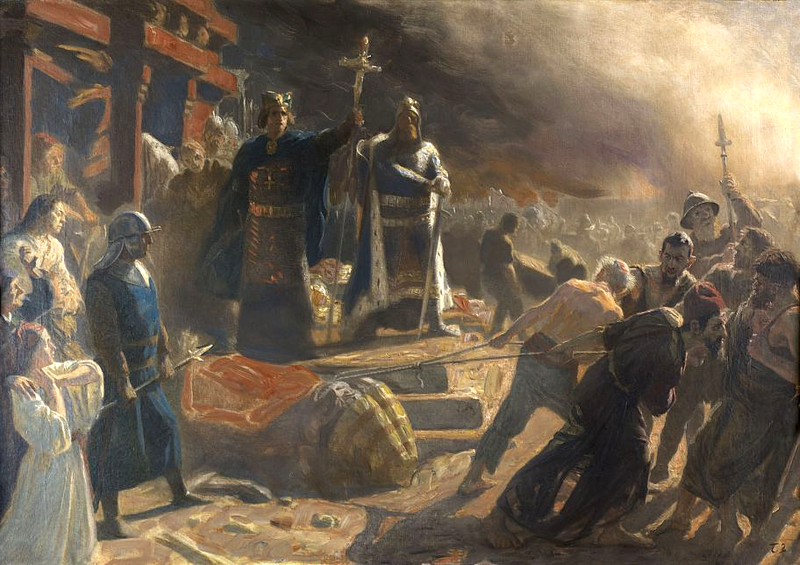
Bishop Absalon Topples the God Svantevit at Cape Arkona, 1850
At Skagen, Tuxen painted alongside other notable Danish artists including P.S. Krøyer and Michael Ancher. The colony became a significant movement in Scandinavian art.
Tuxen’s work from this period captured the distinctive atmospheric conditions and daily life in Skagen. Many of these paintings are now housed in Skagens Museum.
He maintained his connection with the Skagen community throughout his life, returning there regularly to paint and socialize with fellow artists.
Royal Commission and Prestige
Tuxen’s exceptional talent for portraiture led to prestigious commissions from European royalty. King Christian IX of Denmark was among his early royal clients.
His reputation grew internationally, and he received invitations to paint Queen Victoria of the United Kingdom and her extended family. These works showcased his ability to handle complex group portraits.
Tuxen also painted Tsar Nicholas II of Russia and other European monarchs. For these achievements, he was awarded the Commander of the Royal Victorian Order (CVO).
The royal commissions allowed Tuxen to travel extensively throughout Europe, expanding his artistic horizons while cementing his status as one of the most sought-after portrait painters of his era.
Style artistique et œuvres notables
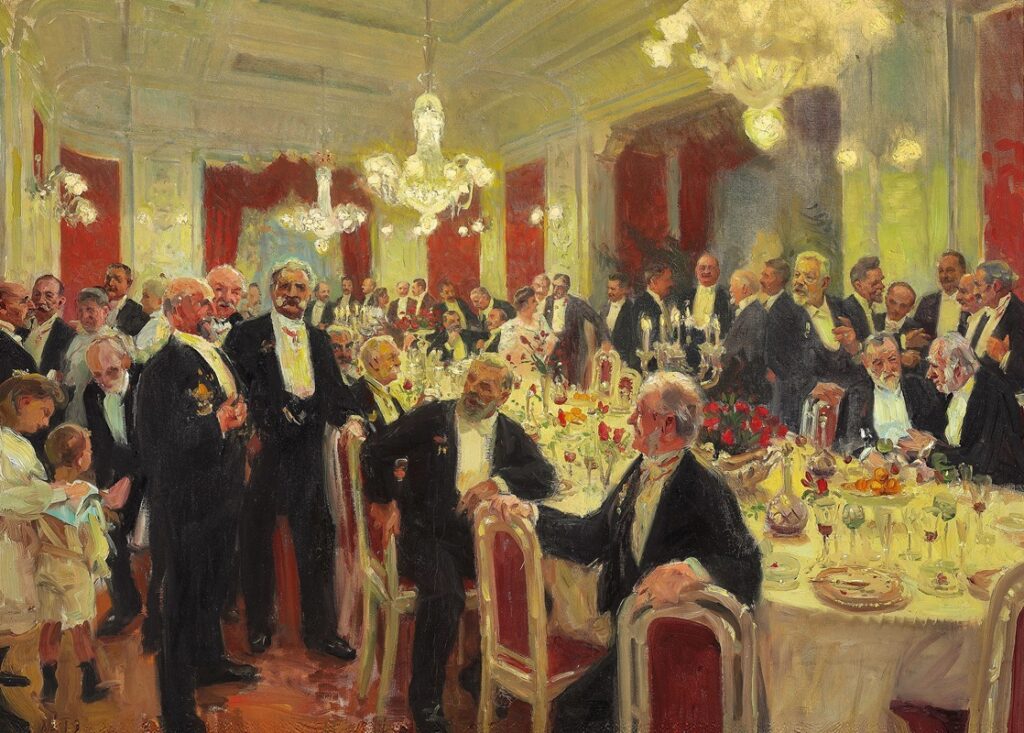
Leaving the Table, 1906, by Laurits Tuxen
Laurits Tuxen developed a distinctive artistic style characterized by his masterful use of light, color, and composition. His work spanned from grand royal portraits to intimate landscapes, displaying his versatility and technical prowess.
Group Portraits and Royal Connections
Tuxen excelled in creating detailed group portraits that captured both individual personalities and collective dynamics. His most famous royal commissions came from Queen Victoria, who invited him to paint significant family gatherings and ceremonies. These works demonstrated his remarkable ability to arrange numerous figures in natural poses while maintaining compositional harmony.
The painting “The Family of Queen Victoria” showcases Tuxen’s talent for depicting multiple subjects with precision and dignity. His royal connections extended beyond the British monarchy to the Russian and Danish royal families.
Tuxen’s approach to group portraiture combined academic precision with a sensitivity to human interaction. He used subtle lighting techniques to highlight important figures while creating a cohesive visual narrative.
Scenic Landscapes and Garden Flowers
When not painting royalty, Tuxen created stunning landscapes that revealed his connection to the Skagen Painters group. His coastal scenes captured the distinctive Nordic light with an impressionistic quality that showed the influence of French painting techniques.
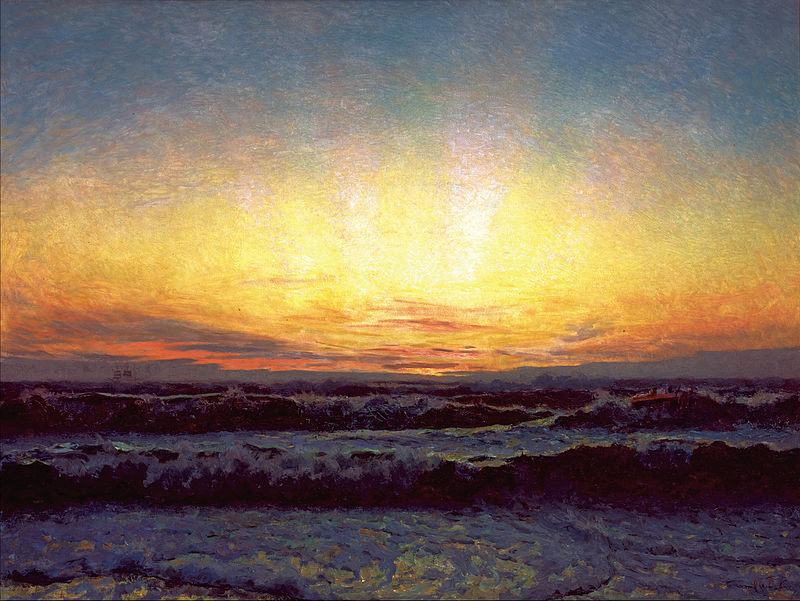
The North Sea in Stormy Weather After Sunset. Højen, 1909
Tuxen’s garden paintings feature vibrant floral arrangements and lush outdoor settings. These works display a more intimate, personal side of the artist, often depicting his own garden at his Skagen home.
His landscape technique featured bold brushwork with impasto application, creating textural depth and luminosity. Tuxen’s color palette in these works tends toward bright, natural tones that evoke the sensory experience of being outdoors.
Exposure to Diverse Cultures and Geographies
Tuxen’s extensive travels significantly influenced his artistic development. His time in France exposed him to impressionist techniques that he later incorporated into his own distinctive style.
While working for various royal courts across Europe, Tuxen absorbed different cultural aesthetics and artistic traditions. This cosmopolitan exposure broadened his visual vocabulary and technical approach.
His paintings from Italy and other Mediterranean locations show a fascination with quality of light distinct from his Nordic works. These southern European scenes often feature warmer palettes and more relaxed compositions.
Tuxen’s ability to adapt to different cultural contexts while maintaining his artistic identity made him versatile and sought-after throughout Europe. His exposure to diverse artistic traditions enriched his work without compromising his personal vision.
Héritage et reconnaissance
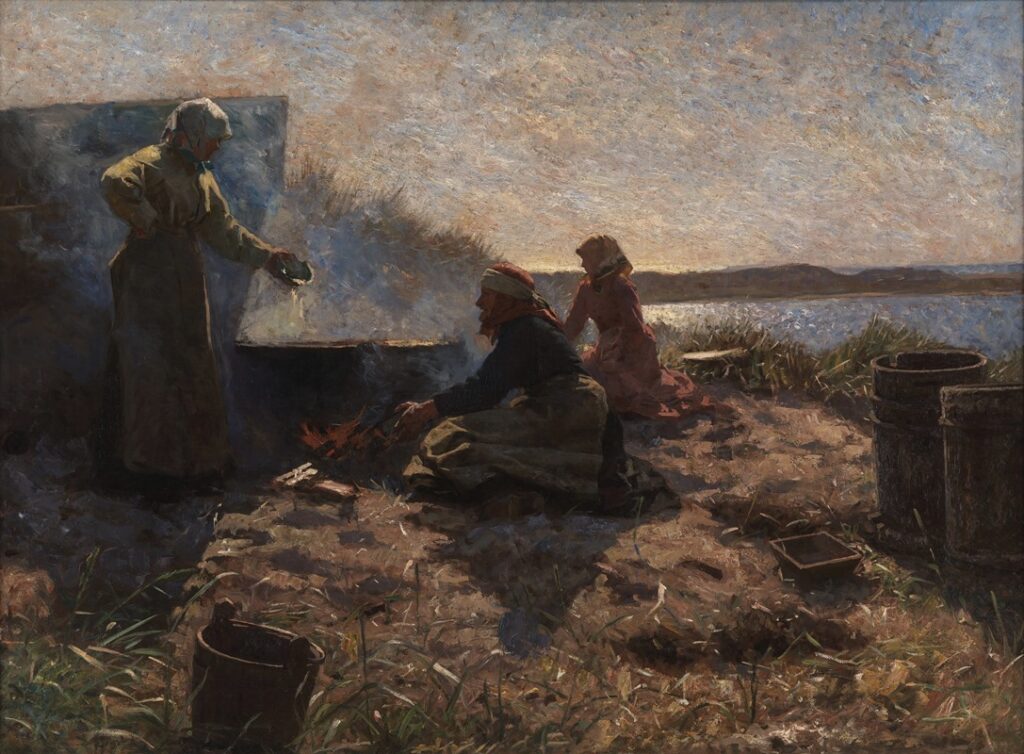
Boiling Train Oil at Nymindegab, Jutland, 1878–1879, by Laurits Tuxen
Laurits Tuxen’s artistic contributions continue to be celebrated in prestigious institutions worldwide. His masterful techniques in figure painting and portraiture have secured his place in art history as one of Denmark’s most significant painters.
Art Museums Featuring Tuxen’s Works
Skagens Museum in Denmark houses a substantial collection of Tuxen’s paintings, showcasing his connection to the Skagen Painters collective. The museum displays his landscapes capturing the unique Nordic light that made the Skagen group famous.
The National Gallery of Denmark in Copenhagen features several of his royal portraits and historical paintings, highlighting his status as a court painter.
The Tuxen Museum in Skagen, established in his former summer residence, preserves his studio and personal artifacts alongside many of his works.
His paintings also appear in international collections including the Royal Collection in the United Kingdom, where his royal commissions are displayed at Windsor Castle and Buckingham Palace.
Influence sur les artistes contemporains
Tuxen’s technical mastery influenced generations of Nordic painters, particularly in figure composition and light management. His collaboration with P.S. Krøyer established techniques that became foundational for Danish painting traditions.
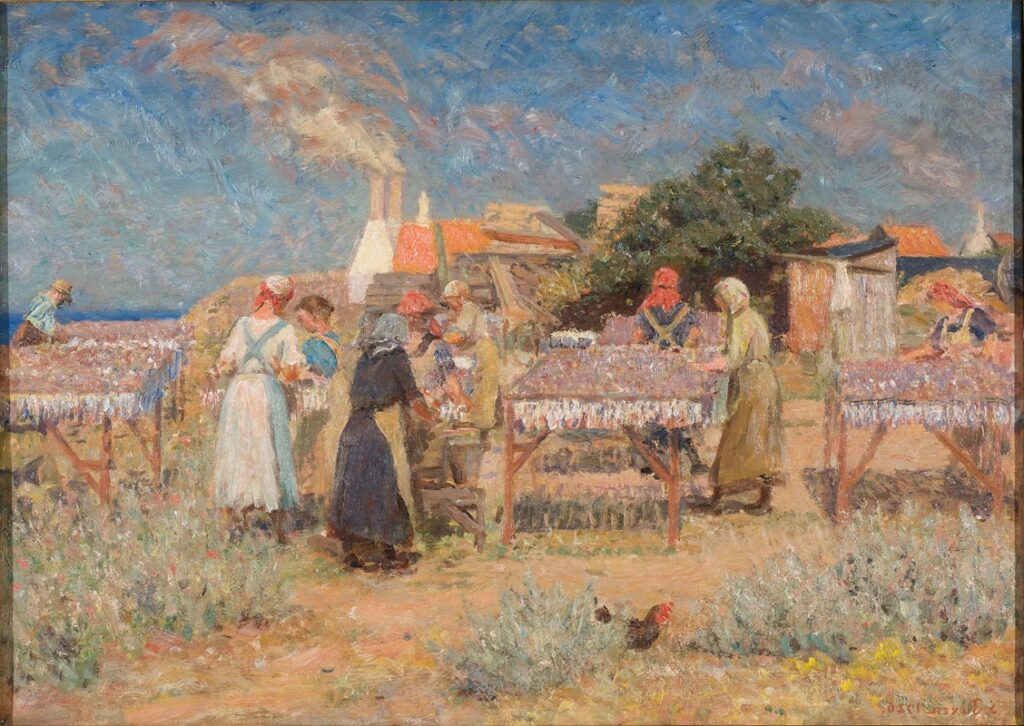
Sun Drying Herrings, 1926, by Laurits Tuxen
His approach to portraiture, balancing formal requirements with psychological insight, continues to inspire portrait artists today. The “Dagminne” style he developed for intimate family scenes created a new pathway for domestic subject matter in Scandinavian art.
Modern Danish painters still reference his methods for capturing the distinctive coastal light of Skagen. His combination of academic training with impressionistic elements created a unique approach that artists continue to study and adapt.
Questions fréquemment posées
Laurits Tuxen was a prominent Danish artist whose career spanned several decades and artistic movements. His versatile talents allowed him to create significant works in portraiture, landscape, and historical painting while also working as a sculptor.
What artistic movement is Laurits Tuxen most associated with?
Laurits Tuxen is most strongly associated with the Skagen Painters, an artist colony of Danish and Nordic artists who gathered in Skagen, Denmark’s northernmost town. This group worked primarily in an Impressionist style, capturing the unique light and landscape of the region.
Tuxen embraced the plein air painting approach characteristic of this movement, focusing on natural light and everyday scenes. The Skagen group was Denmark’s version of the broader European Impressionist movement.
His work also shows influences of academic training and classical techniques, demonstrating his versatility across artistic styles.
What are some of the most notable works painted by Laurits Tuxen?
Among Tuxen’s most recognized works are his royal commissions, including “The Marriage of Princess Maud of Wales” and “Queen Victoria’s Family in 1887.” These paintings showcase his skill in capturing formal gatherings with accuracy and detail.
His landscape “Summer Evening at Skagen Beach” exemplifies his connection to the Skagen school, depicting the distinctive Nordic light. “Suzanne in the Bath” represents his figure paintings.
Tuxen’s portrait work includes studies of the Danish royal family and various European monarchs, which brought him international recognition during his lifetime.
How did Laurits Tuxen’s work influence the art world during his time?
Tuxen was influential as one of the foremost painters of his era, serving as a bridge between academic traditions and newer impressionist techniques. His royal connections helped elevate Danish art on the international stage.
As a court painter to multiple European royal families, he documented historical moments that now serve as important visual records of late 19th and early 20th century royal events.
His involvement with the Skagen Painters helped establish this group as significant contributors to Scandinavian art history and the broader impressionist movement.
Can you describe the style and techniques utilized by Laurits Tuxen in his paintings?
Tuxen employed a versatile style that blended academic precision with impressionist light effects. His brushwork could be meticulous and detailed for royal portraits or looser and more expressive in his landscape pieces.
He mastered the capture of natural light, particularly the unique quality of light in Skagen where land meets sea. This skill is evident in his beach scenes and outdoor works.
For royal commissions, Tuxen demonstrated exceptional skill in capturing likenesses and handling complex group compositions with numerous figures, all while maintaining formal dignity.
What role did Laurits Tuxen play in the court painting tradition of European monarchies?
Tuxen served as an official court painter to several European royal families, most notably Queen Victoria of England and the Russian Imperial family. This prestigious position came with commissions to document important royal ceremonies and create formal portraits.
His royal connections allowed him to paint multiple monarchs, creating visual documentation of an era of European royalty just before major political changes would transform the continent.
These royal works combined traditional court painting protocols with Tuxen’s personal artistic style, resulting in formal yet artistically significant paintings.
Are there any major exhibitions or collections that feature Laurits Tuxen’s work prominently?
The Skagens Museum in Denmark houses a significant collection of Tuxen’s works. They are displayed alongside other Skagen Painters. This museum is essential for understanding his contribution to Danish art.
Several of his royal commissions remain in the British Royal Collection. You can view them at royal palaces including Buckingham Palace and Windsor Castle.
The National Gallery of Denmark (Statens Museum for Kunst) in Copenhagen also features important works by Tuxen. They place him within the context of Danish art history.

